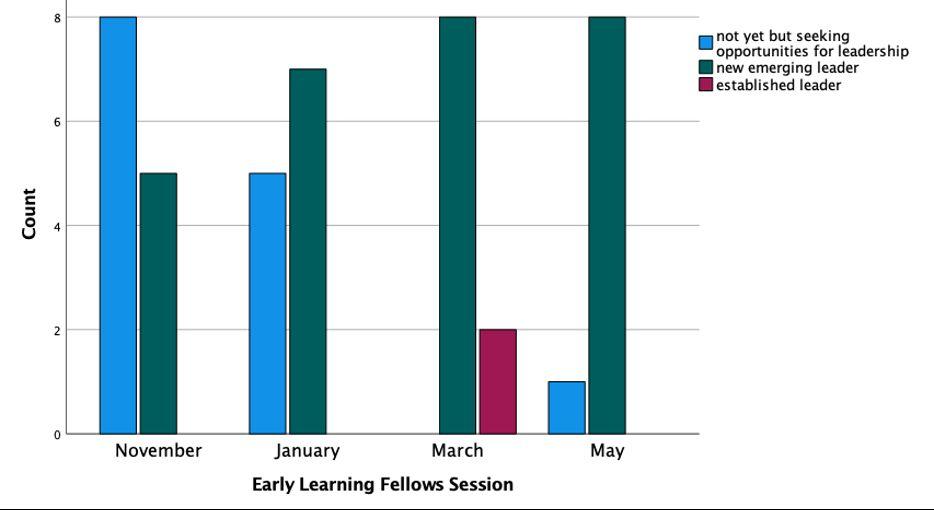
1 minute read
Year One Highlights Emerging Leadership
Surveys as well as action plan and interview data showed fellows’ development in leadership identity and activity. Statistical analyses of exit surveys across the year showed fellows’ growth in their self perceptions as early learning leaders in the broader community. The majority of fellows started the program with a view of themselves as “not yet” leaders (see Figure 1). Over time, the group overwhelmingly came to perceive themselves as emerging community leaders, with two fellows indicating a shift to “established leader.” A dramatic advance in leadership self-perception across the group occurred between the second and third ELF meetings (see Figure 1); this change aligned with a shift in ELF meeting activities during those sessions, where the time allotted for fellows’ action planning, sharing, consulting, and networking was doubled.
Fellows’ Perceptions of Their Roles in the Broader Community Over Time
Advertisement
When thinking about our greater Missoula community, how do you view your leadership role?

1
Average responses on a seven-point likert scale increased following the initial (M = 5.23, SD = 1.23), second (M = 5.91, SD = .8), third (M = 6.0, SD = .7), and final ELF meeting (M = 6.11, SD = .6). Overall fellows' responses moved away from responses such as “interesting but how will this affect me” to “I’m committed and how can we bring this vision to more people.” Inconsistent attendance across ELF sessions due to illness was a limitation of the data.
Average responses to 4-pt exit survey: first meeting (M = 2.38, SD = .50, N = 13), second (M = 2.58, SD = .52, N = 12), third (M = 3.2, SD = .42, N = 10), and fourth (M = 2.9, SD = .33, N = 9).

